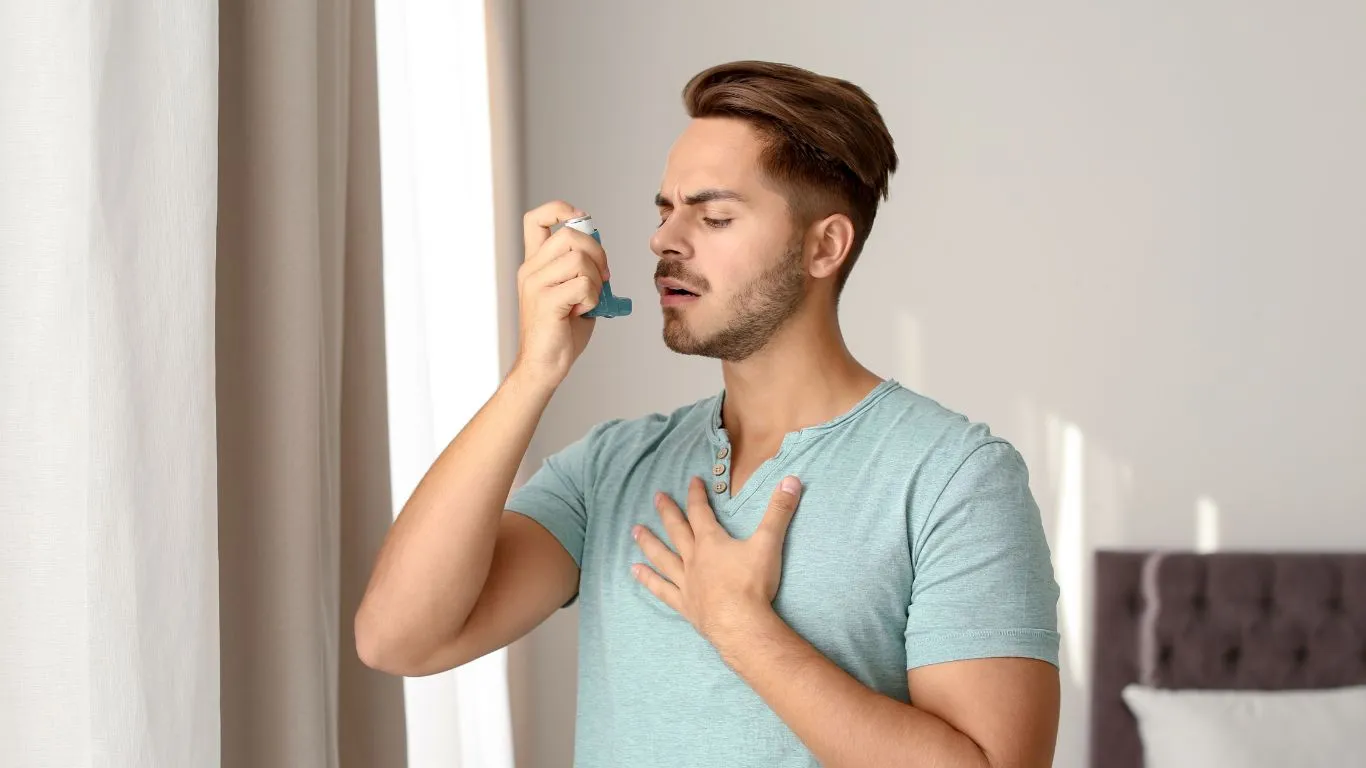7 Proven Ways to Boost Asthma Control Through Physical Therapy
Asthma can feel like a constant battle—one minute you’re fine, and the next, you’re gasping for air. I know this all too well, having worked with countless individuals struggling with respiratory issues. But did you know that asthma control through physical therapy is a real game-changer? Yep, beyond inhalers and medication, the right movement and breathing techniques can make a huge difference in managing symptoms and improving overall lung function.
How Physical Therapy Helps with Asthma

When most people think of physical therapy, they picture rehab after an injury. But for asthma? It’s an underappreciated yet highly effective tool. A skilled physical therapist can guide you through specialized breathing techniques, posture corrections, and exercises designed to:
- Improve lung function by strengthening respiratory muscles.
- Reduce breathlessness through better breathing control.
- Enhance posture, which can prevent lung compression.
- Lower stress and anxiety, common asthma triggers.
In my years of working with asthma patients, I’ve seen how small tweaks—like learning to breathe through the diaphragm instead of the chest—can lead to fewer attacks and better quality of life.
Breathing Techniques That Make a Difference

Diaphragmatic Breathing
Also known as “belly breathing,” this technique encourages deeper, more efficient breaths. Instead of shallow chest breathing, you focus on engaging the diaphragm. Here’s how:
- Sit or lie down in a comfortable position.
- Place one hand on your chest and the other on your belly.
- Inhale deeply through your nose, allowing your belly to rise while keeping your chest still.
- Exhale slowly through pursed lips, feeling your belly lower.
Many asthma patients I’ve worked with were amazed at how this simple adjustment helped them breathe easier during flare-ups.
Pursed-Lip Breathing
This technique is a lifesaver when shortness of breath strikes. By controlling the flow of air, it prevents airways from collapsing and keeps breathing steady. Try this:
- Inhale deeply through your nose.
- Purse your lips as if you’re about to whistle.
- Exhale slowly and steadily through pursed lips, making the exhale twice as long as the inhale.
Not only does this help during an asthma episode, but it also trains your lungs to function more efficiently over time.
Physical therapy isn’t just for sports injuries—when tailored for asthma, it can be life-changing. And trust me, I’ve seen it firsthand. But what about posture? You might be surprised at how much slouching affects your breathing! Let’s dive into that next.
The Role of Posture in Asthma Control

Now, let’s talk about something that doesn’t get nearly enough attention—posture. It might not seem like a big deal, but the way you sit and stand can seriously impact your breathing. Poor posture, like slouching or hunching over, compresses the lungs, making it harder to take full, deep breaths. For asthma sufferers, that’s the last thing we need!
How Bad Posture Affects Breathing
- Reduces lung capacity, leading to shallower breathing.
- Strains the neck and chest muscles, making it harder to breathe properly.
- Increases stress on the diaphragm, limiting its movement.
One of my patients, a teenager who loved gaming for hours, used to slouch so much that he constantly struggled with shortness of breath. Once we corrected his posture and incorporated specific stretches, his asthma symptoms improved significantly.
Posture Fixes to Improve Breathing
Making small adjustments to your posture throughout the day can work wonders for asthma control. Try these:
- Sit up straight with your shoulders relaxed and your back supported.
- Avoid slouching—keep your chest open to allow more air into your lungs.
- Practice “The Wall Stand”: Stand with your back flat against a wall for a few minutes daily to train proper posture.
- Stretch regularly to release tension in your neck, shoulders, and back.
When your posture is aligned, breathing feels more natural and effortless. And trust me, I’ve seen the difference firsthand!
Strengthening the Respiratory Muscles

Most people focus on cardio for lung health, but did you know you can actually train your respiratory muscles just like any other muscle group? Strengthening these muscles can make breathing easier and reduce the severity of asthma attacks.
Exercises to Strengthen Your Lungs
- Diaphragmatic breathing workouts (like resistance breathing exercises).
- Inspiratory muscle training (using a respiratory trainer to build endurance).
- Blowing exercises (like blowing up balloons or using a straw in water).
One of my personal favorites? The “straw technique.” Just grab a regular drinking straw and breathe through it for a few minutes, focusing on slow, controlled inhales and exhales. It might sound simple, but it really works your lungs and strengthens those tiny breathing muscles!
Incorporating Physical Therapy into Your Daily Routine
So, how do you make all of this a habit? It’s one thing to know these techniques, but another to apply them consistently. The good news is, it doesn’t have to feel like a chore.
Tips for Making Physical Therapy Part of Your Life
- Set reminders—Use phone alerts or sticky notes to remind yourself to practice breathing exercises.
- Combine it with daily activities—Do your posture drills while watching TV or working at your desk.
- Use visual cues—Place a small mirror where you work to check your posture throughout the day.
- Make it enjoyable—Turn your breathing exercises into a relaxing meditation session.
One of my patients started doing pursed-lip breathing during his morning coffee routine, and it became second nature for him. Small, consistent actions lead to big improvements over time!
By integrating these techniques into your lifestyle, you’ll notice fewer asthma flare-ups, better breathing efficiency, and an overall improvement in your quality of life. And we’re not done yet—next, we’ll explore how movement and gentle exercise play a crucial role in asthma control!
Case Studies & Real-Life Examples

Nothing speaks louder than real-life success stories. Over the years, I’ve worked with people from all walks of life who’ve struggled with asthma but found relief through physical therapy. Here are a couple of inspiring examples:
Maria’s Story: From Frequent Attacks to Freedom
Maria, a 42-year-old teacher, came to me frustrated and exhausted. Her asthma attacks were so frequent that she relied on her rescue inhaler multiple times a day. After assessing her lifestyle, we realized she was breathing inefficiently and had poor posture due to long hours at her desk.
We worked on diaphragmatic breathing, posture correction, and light aerobic exercises. Within a few months, she noticed a dramatic drop in her symptoms. Now, she rarely needs her inhaler, and she swears by the pursed-lip breathing technique whenever she feels short of breath.
Jake’s Story: An Athlete with Asthma
Jake, a 17-year-old soccer player, faced constant breathlessness during games. His doctor had prescribed medication, but it wasn’t enough. We focused on respiratory muscle training and controlled breathing drills to help him regulate his airflow during exertion.
After a few months of training, his endurance improved, and his asthma symptoms became more manageable. Today, he plays at a competitive level without worrying about his breathing holding him back!
Key Takeaways: What You Need to Remember
By now, you’ve learned that asthma control through physical therapy isn’t just a theory—it’s a powerful strategy. Here are the key points to take away:
- Breathing techniques like diaphragmatic breathing and pursed-lip breathing can improve airflow and prevent attacks.
- Posture matters—slouching compresses the lungs, making it harder to breathe.
- Strengthening respiratory muscles through controlled exercises can make breathing easier.
- Movement and gentle exercise (when done correctly) can reduce asthma flare-ups.
- Consistency is key—the more you practice these techniques, the more effective they become.
FAQs
Can physical therapy replace my asthma medication?
No, physical therapy should be used alongside your asthma medication, not as a replacement. Always follow your doctor’s advice.
How long does it take to see results?
It varies! Some people notice improvements in a few weeks, while others may take a couple of months. The key is consistency.
Are there specific exercises I should avoid?
Intense workouts that trigger symptoms (like sprinting in cold air) should be modified. Always consult a professional before starting a new routine.
Bonus: Additional Resources or DIY Tips
Want to dive deeper into asthma-friendly exercises and breathing techniques? Check out these helpful resources:
- American Lung Association – A fantastic source for respiratory health information.
- CDC Asthma Resources – Evidence-based guidelines for asthma management.
- Mayo Clinic: Asthma Management – Tips from medical experts.
Appendix
Table: Quick Summary of Physical Therapy Techniques for Asthma
| Technique | Benefits | How to Do It |
|---|---|---|
| Diaphragmatic Breathing | Improves oxygen intake and lung efficiency | Breathe deeply into your belly instead of your chest |
| Pursed-Lip Breathing | Prevents airway collapse and slows breathing | Inhale through your nose, exhale slowly through pursed lips |
| Posture Correction | Reduces lung compression, making breathing easier | Sit and stand with an open chest and relaxed shoulders |
Disclaimer
This article is for informational purposes only and is not a substitute for professional medical advice. Always consult your doctor or physical therapist before making changes to your asthma management plan.
Call to Action
Have you tried any of these physical therapy techniques for asthma? I’d love to hear your experience! Leave a comment below, and let’s keep the conversation going.
And if you found this guide helpful, don’t forget to share it with someone who might benefit. Breathing better starts today!

Bianca Nala is a compassionate Nurse Practitioner with a strong background in primary and respiratory care. As a health writer for Healthusias.com, she combines her clinical expertise with a talent for clear, relatable storytelling to help readers better understand their health. Bianca focuses on topics like asthma, COPD, chronic cough, and overall lung health, aiming to simplify complex medical topics without losing accuracy. Whether she’s treating patients or writing articles, Bianca is driven by a single goal: making quality healthcare knowledge accessible to everyone.






